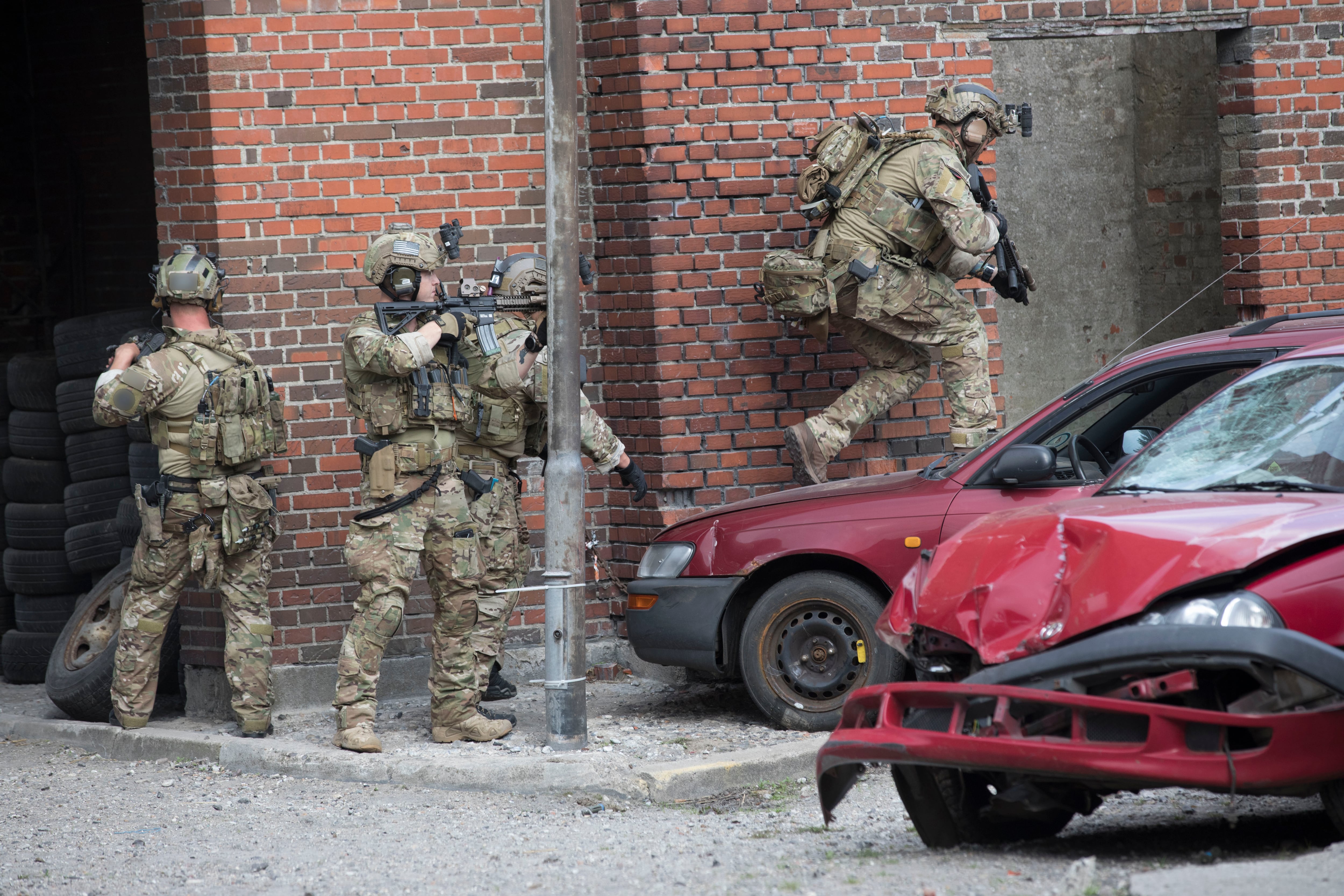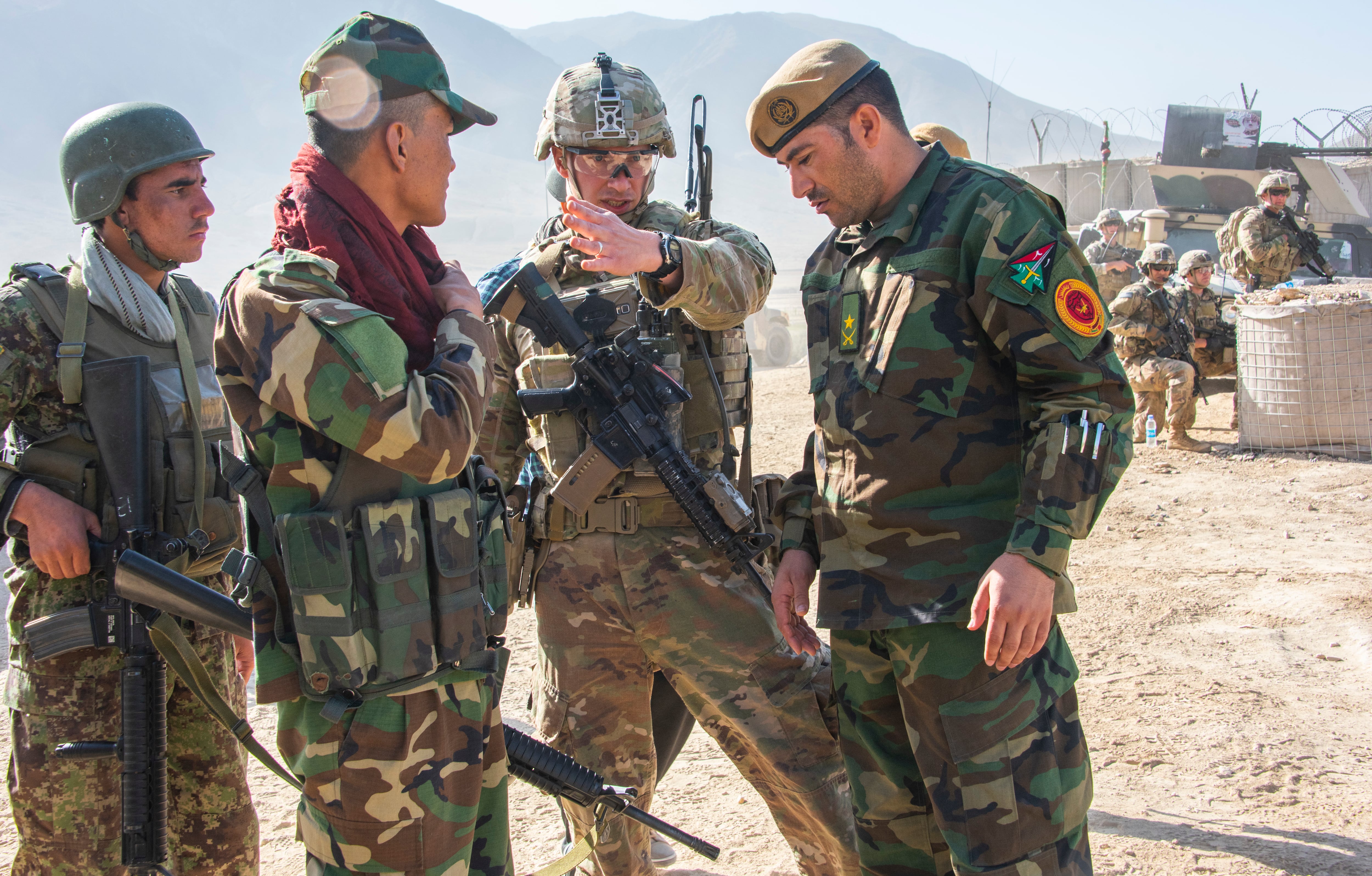The Army’s 3rd Security Force Assistance Brigade is activating Tuesday during a ceremony at Fort Hood, Texas, as it prepares for overseas missions in the Middle East.
The brigade has already been training at the installation, but the ceremony marks its official activation under Army Forces Command.
SFABs are designed to work on behalf of geographic combatant commanders, integrating with foreign partner forces and advising them to build security capacity in support of U.S. national interests.
“3rd SFAB is training and planning to assist with overseas missions in the U.S. Central Command region, and will have a Joint Readiness Training Center rotation later this summer,” Maj. Jefferson Grimes, a brigade spokesman, told Army Times. “The activation ceremony will recognize our unit as an official FORSCOM formation and adds to our heraldry and lineage.”
The adviser brigades are part of an attempt to free up special operations and conventional forces that have traditionally been preoccupied with advising in places like Afghanistan, allowing them to focus their efforts elsewhere, such as 1st Special Forces Group’s operations in the Asia Pacific region.
The SFAB concept was originally designed to be available all over the world. But so far, the brigades have been mostly tapped for Central Command’s need to train and advise Afghan National Army and Afghan National Police.
In November, the 1st SFAB, based at Fort Benning, Georgia, completed its first deployment to Afghanistan. Earlier this year, the 2nd SFAB followed up, deploying from its home base of Fort Bragg, North Carolina.
The 4th SFAB is scheduled to begin standing up later this year, and the Army has also begun another SFAB assigned to the National Guard.
RELATED

“I think future deployments throughout the world will be in much smaller packages," Brig. Gen. Scott Jackson, 1st SFAB commander, told reporters in May. “I think a situation where you have a single team in a single country is a likely scenario.”
Army Chief of Staff Mark Milley echoed that sentiment in January, stating that the plan is still to make SFABs available for deployments to Africa and Europe and not solely for Afghanistan.
That appears to be underway on the Guard side. In late May and early June, soldiers from the Florida Army National Guard’s 54th SFAB worked with Caribbean allies as part of Southern Command’s Exercise Tradewinds to bolster their defense capacity.
It marked the first overseas unit mobilization for the 54th.
“The reason we said five [SFABs], initially, was to have one for each of the geographical combatant commands,” Milley told Army Times in January, adding that the National Guard-based brigade would be on hand for Northern Command’s needs.
Congress has also expressed an interest in ensuring that special operations forces in Eastern Europe are being used for missions that fit their roles, leaving other tasks to conventional troops. Many special operations forces have been training European allies in the Baltic states and Ukraine, a task that conventional forces could be just as well suited to perform in permissive environments.
In text added to the 2020 defense budget bill last month, lawmakers ordered an independent review of special operations force structure, roles and responsibilities.
SFABs are comprised of roughly 800 professional combat advisers who are selected, trained and equipped to support combatant commanders by integrating with foreign security forces.
Kyle Rempfer was an editor and reporter who has covered combat operations, criminal cases, foreign military assistance and training accidents. Before entering journalism, Kyle served in U.S. Air Force Special Tactics and deployed in 2014 to Paktika Province, Afghanistan, and Baghdad, Iraq.





